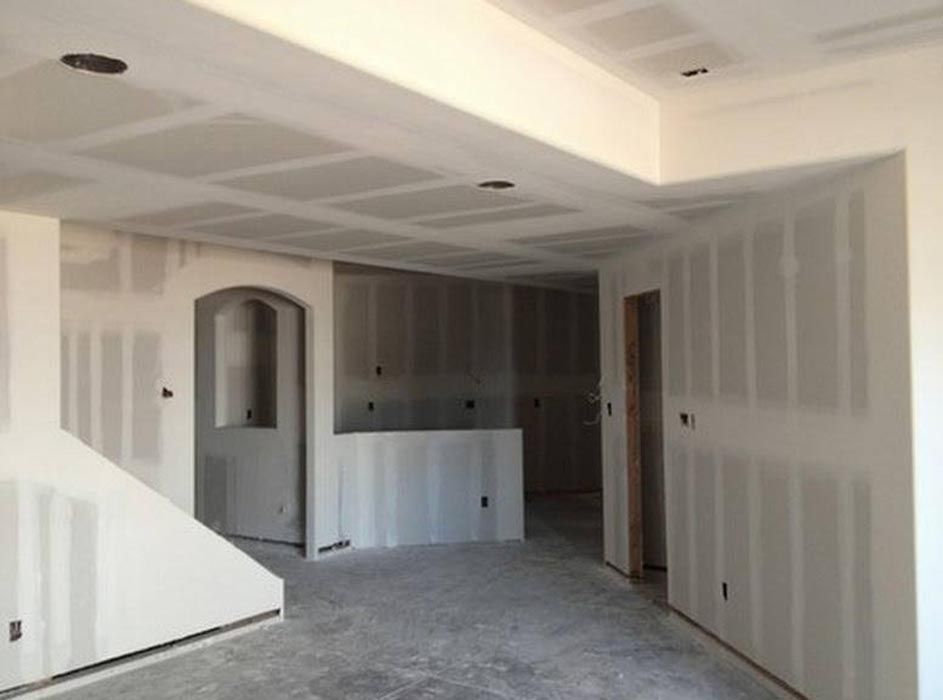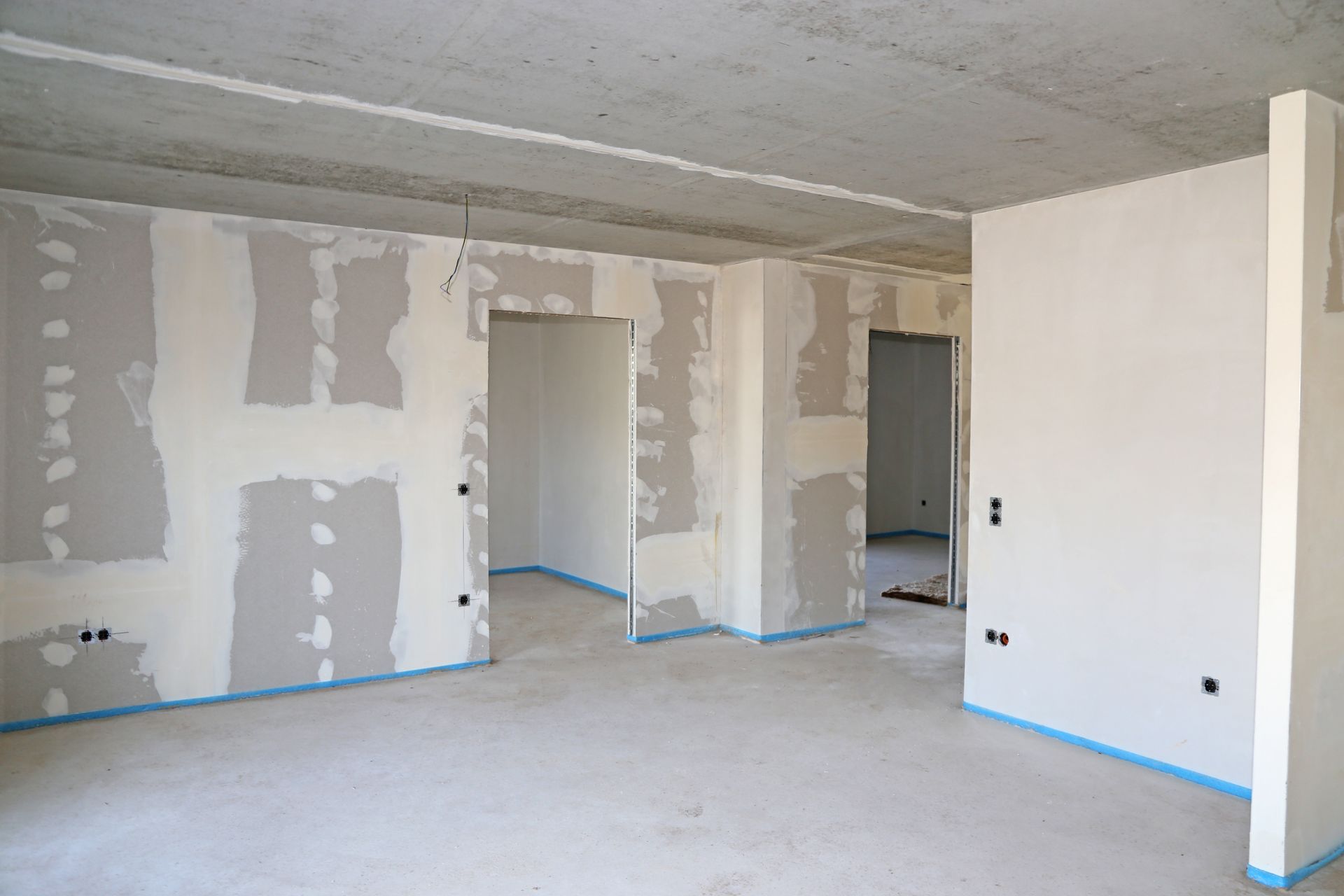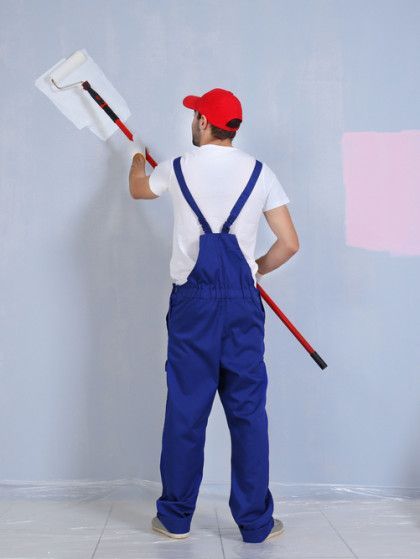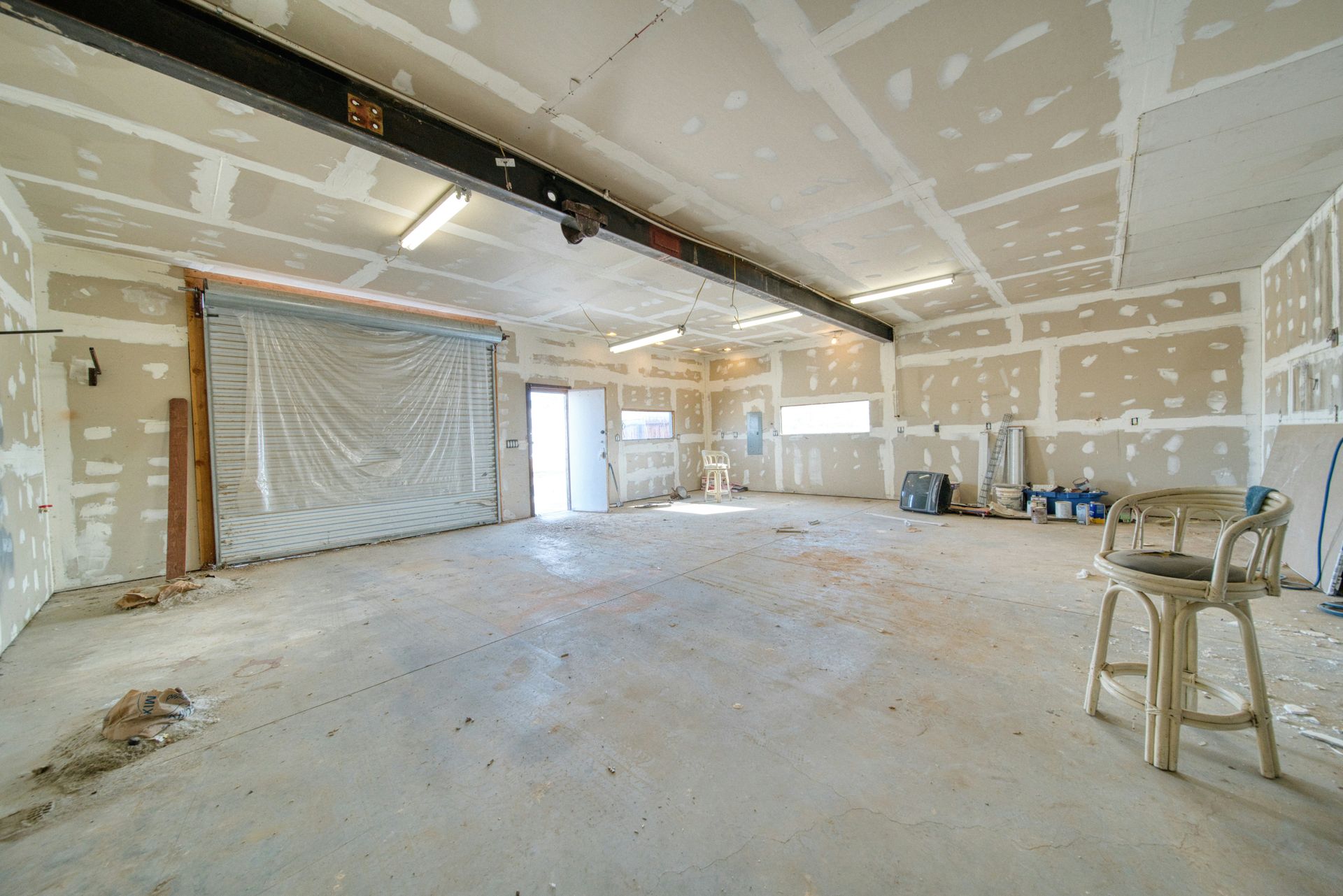WENDELL BARCO PLASTERING BLOG
How to Prepare Your Home for a Drywall and Painting Project
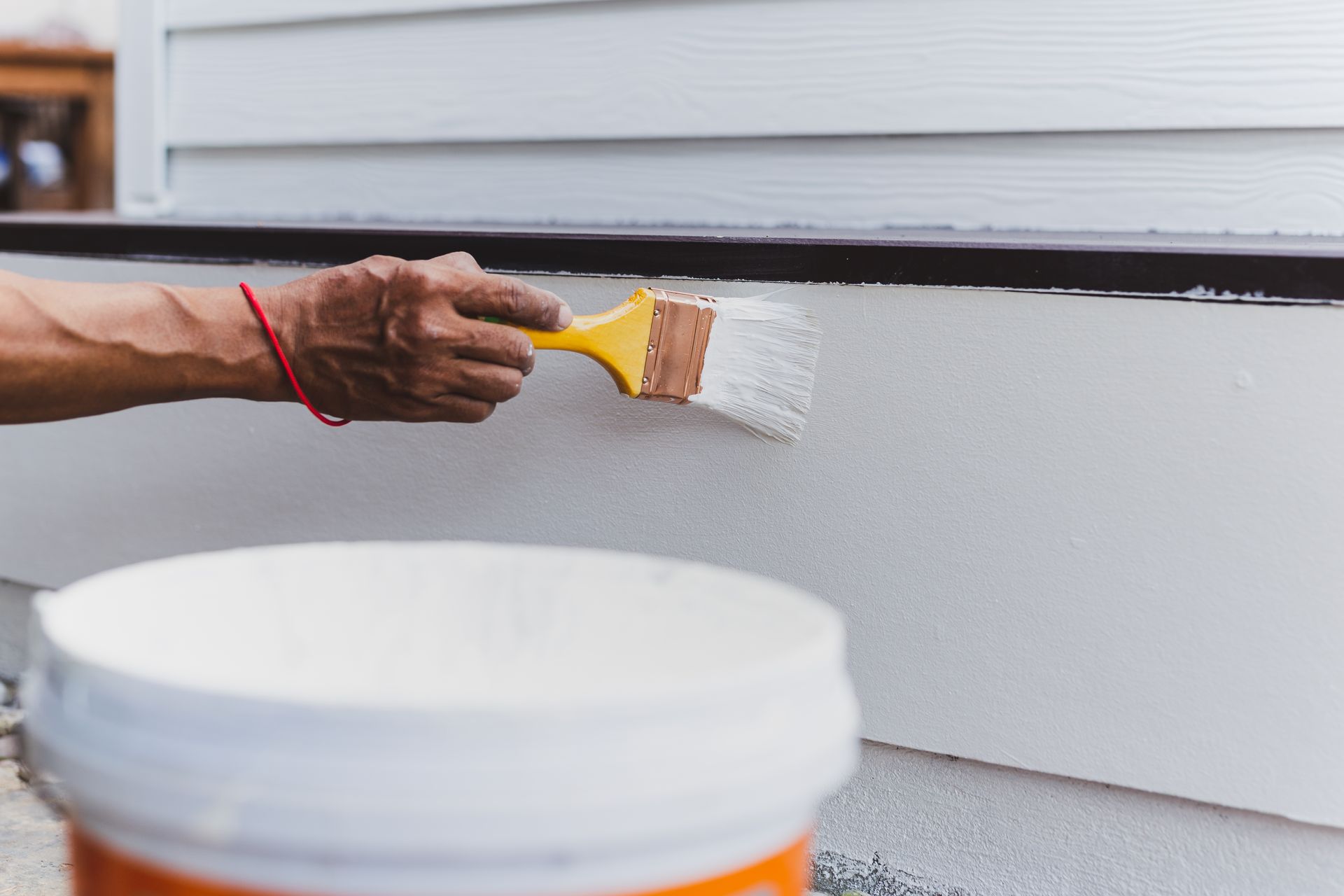
Slide title
Write your caption hereButton
Undertaking a drywall and painting project is an exciting opportunity to refresh and revitalize the interior of your home. Whether you're repairing damaged drywall, adding a fresh coat of paint, or remodeling a room, careful preparation is key to achieving professional-looking results. With proper planning, you can minimize disruption, protect your belongings, and ensure that your project runs smoothly. Wendell Barco Plastering, your trusted drywall and painting company in Portsmouth, VA, has put together this guide to help you prepare your home for your upcoming project.
1. Clear the Space: Remove Furniture, Decorations, and Belongings
Before your drywall and painting team arrives, it's important to clear the area to give them full access to the walls and ceiling. Properly preparing the space makes the project faster and reduces the risk of accidental damage to your belongings.
Move Out Large Furniture
Start by moving out large pieces of furniture such as couches, chairs, and tables. If you have limited storage space, consider moving the furniture to another room or renting temporary storage. If moving large pieces is not feasible, simply push them to the center of the room and cover them with protective plastic sheets.
Remove Wall Art and Decorations
Take down any wall art, mirrors, picture frames, and shelving that could obstruct the work area. Pack these items carefully in bubble wrap or protective materials to prevent them from breaking during the project. Don’t forget to label boxes or storage containers, making it easier to put everything back in place after the job is done.
Store Smaller Belongings
For smaller items like lamps, books, or decorative knick-knacks, store them in boxes and move them to a secure location, such as a closet or basement. Be mindful of items that may be sensitive to dust, which can accumulate during drywall work. Place these items in airtight containers for added protection.
2. Protect Your Floors and Fixtures
Drywall installation and painting projects can be messy. Dust, paint splatters, and debris can easily find their way onto floors, fixtures, and other surfaces. By taking the necessary precautions, you can avoid unwanted damage and minimize cleanup time after the project.
Cover the Floors
Covering your floors is crucial to prevent paint splatters, dust, and debris from accumulating on carpets, hardwood floors, or tiles. Use heavy-duty drop cloths or plastic sheeting to create a protective barrier. For areas with sensitive flooring, such as wood or laminate, consider using painter’s tape to secure the edges of the drop cloth and ensure it doesn’t slip out of place.
Protect Light Fixtures and Ceiling Fans
Light fixtures and ceiling fans are particularly vulnerable during drywall work and painting. Dust can settle in hard-to-reach areas, and paint splatters can land on fixtures if they're not covered properly. Remove any detachable parts of ceiling fans or light fixtures, or cover them with plastic bags or protective wraps. Use painter’s tape to secure the covering, ensuring full protection.
Cover Windows and Doors
Protect windows, window sills, and door frames with painter’s tape and plastic sheeting. This step will prevent dust, paint splatters, and accidental damage from impacting your home's finishings.
3. Ensure Proper Ventilation and Airflow
Drywall and painting work can produce dust, fumes, and odors that might linger inside your home without proper ventilation. Ensuring good airflow will not only make the working environment safer for the professionals, but it will also help speed up the drying process for paint and drywall compound.
Open Windows and Doors
If the weather permits, open windows and doors to allow fresh air to circulate throughout the room. This will help to disperse dust and fumes while providing a more comfortable environment for workers.
Use Exhaust Fans
Exhaust fans can be useful in pulling dust and odors out of the room. If you're painting a bathroom, laundry room, or kitchen, turning on the exhaust fan can significantly improve air quality. For larger areas, consider using box fans or floor fans to help direct airflow.
Create a Work Zone
If the project is isolated to specific rooms, close off the work zone with plastic sheeting or temporary barriers to prevent dust from spreading throughout your home. This is especially important if you're living in the home while the project is being completed.
4. Plan for Noise and Disruptions
Drywall installation, sanding, and painting can be noisy and disruptive, especially if you’re having work done in common areas like the living room or kitchen. Plan ahead to minimize the impact on your daily routine and reduce the potential stress of living in a home undergoing renovation.
Coordinate Your Schedule
Before the project begins, talk to your drywall and painting contractor about their estimated work schedule. Knowing when the noisiest or messiest parts of the project will occur can help you plan accordingly. For instance, you may want to arrange for family members to spend time outside the home during peak work hours.
Consider Temporary Relocation
For larger projects or jobs that take place in multiple rooms, it may be a good idea to temporarily relocate to a hotel, vacation rental, or a family member’s home. This is particularly helpful if you have small children or pets who could be sensitive to noise and dust.
Prepare for Utility Interruptions
Some drywall and painting projects may require turning off power to certain areas of the home, especially if electrical outlets or fixtures are involved. Be sure to coordinate with your contractor to understand which utilities will be impacted and for how long.
5. Communicate with Your Contractor
One of the most important aspects of any home renovation project is open communication with your contractor. Keep the lines of communication open to ensure that everyone is on the same page and that the project runs smoothly.
Clarify the Scope of Work
Before the project begins, confirm the details of the job with your contractor. This includes the scope of work, timeline, and any specific concerns you may have, such as areas you want to avoid painting or certain wall finishes you'd like to achieve.
Discuss Any Special Requests
If you have specific preferences regarding paint colors, finishes, or drywall textures, be sure to communicate these early on. Discuss any special requests with your contractor to avoid confusion later in the process.
Keep Emergency Contact Information Handy
Lastly, ensure that you have a direct line to your contractor in case any unexpected issues arise during the project. Emergencies such as leaks, electrical problems, or accidental damage should be addressed immediately to prevent further complications.
Contact Wendell Barco Plastering Today!
Are you ready to get started on your drywall and painting project? Wendell Barco Plastering in Portsmouth, VA, is your go-to source for top-notch services. Our team has years of experience handling all types of drywall and painting projects, big or small. We’ll guide you through the process from start to finish and help you prepare your home for a flawless transformation.
Give us a call at (757) 935-7297 to schedule a consultation or request a free estimate. Our team offers drywall installation, plaster, painting, interior painting, and repair work. We're excited to collaborate with you and make your ideas a reality!
FAQs
How long does it take to complete a drywall and painting project?
The time it takes to complete a project depends on the size and complexity of the job. A small room may take a few days, while larger projects or full-home renovations could take several weeks. Talk to your contractor about the schedule to get a more precise cost estimate.
Can I stay in my home during a drywall and painting project?
Yes, in most cases, you can stay in your home during the project. However, it’s important to consider the noise, dust, and fumes that may result from the work. For larger projects, you may want to relocate temporarily.
How should I choose paint colors for my home?
Choosing paint colors can be overwhelming, but a good place to start is by considering your home’s natural lighting, existing décor, and your personal style. Many contractors offer color consultation services to help you make the best choice.
How do I know if my drywall needs to be replaced or just repaired?
Minor cracks, holes, or dents can usually be repaired without replacing entire drywall sections. However, if your drywall has extensive water damage, mold, or large cracks, replacement may be necessary. Your contractor can assess the condition and recommend the best course of action.
How can I reduce dust during a drywall project?
While it’s impossible to eliminate all dust during drywall work, you can reduce it by using plastic sheeting to create barriers, running fans or air purifiers, and regularly cleaning the work area. Contractors may also use dust control methods such as wet sanding or vacuum sanders.
